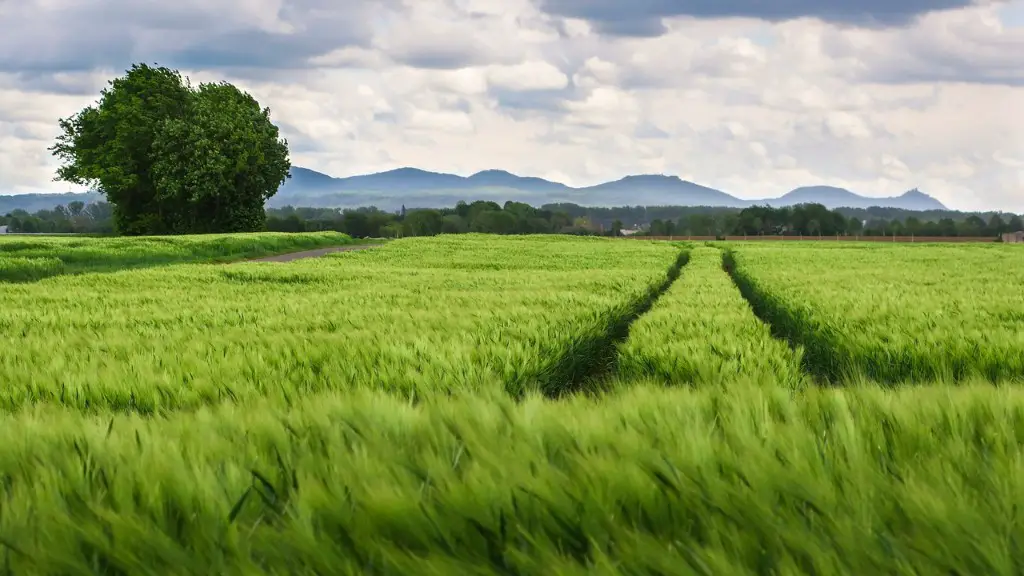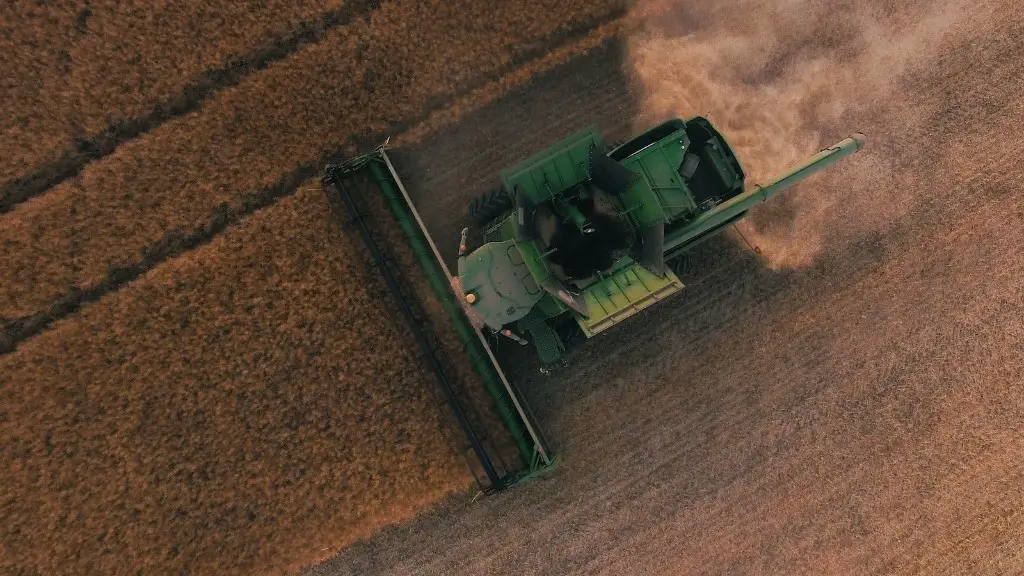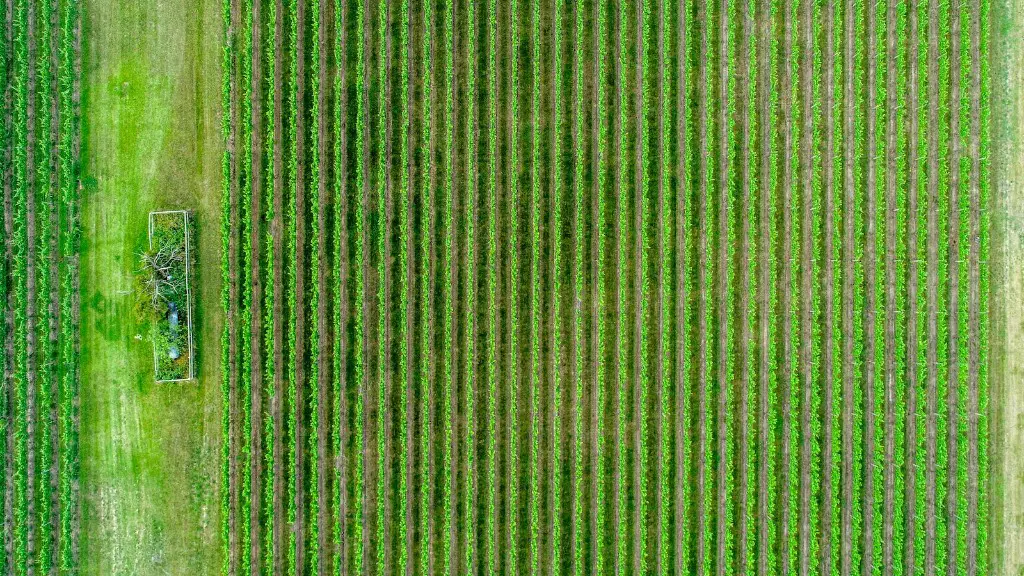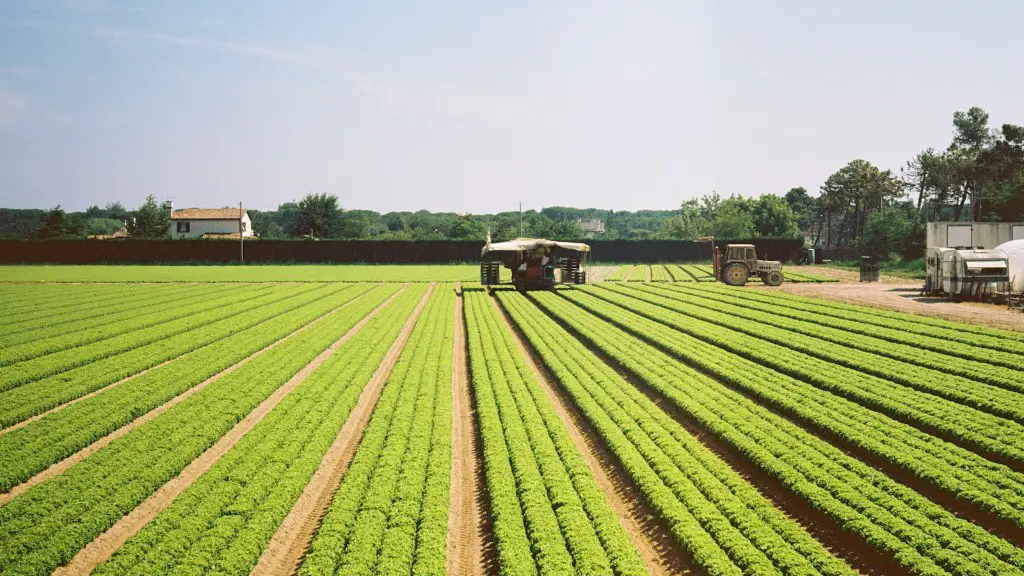Agriculture plays a key role in the global effort to combat climate change and reduce carbon emissions. By taking appropriate measures, both large-scale and small-scale farmers can significantly reduce their carbon footprint. Here are a few steps that can help farmers to reduce their carbon emissions and promote sustainable agricultural practices.
To get started, the first step is to practice conservation tillage. This means growing crops without plowing and less frequent tillage, which can reduce soil erosion and retain moisture in the soil, thereby decreasing carbon emissions. Additionally, farmers should be encouraged to engage in intercropping, which involves growing two or more crops simultaneously. This integrated system of farming has proven to be beneficial, as it helps retain soil fertility, maintains crop rotation and increases overall productivity.
Furthermore, farmers can reduce their carbon emissions by adopting more efficient water management technologies. By using micro-irrigation systems, farmers can prevent water wastage and improve water efficiency. This can help reduce water loss from evapotranspiration and ensure that crops are grown with the required amount of water. Additionally, they can take advantage of rainwater harvesting systems, which can help capture and store water for future use.
Another key measure is to reduce the use of chemical fertilizers and pesticides. By relying heavily on chemical fertilizer, farmers can deplete soil fertility and contribute to water pollution. To reduce the usage of such chemicals, farmers can practice organic farming, which uses natural inputs such as compost and green manure to enhance soil fertility and promote crop growth. Additionally, they can use integrated pest management (IPM) strategies, which focus on preventing pest outbreaks before they become a problem.
Finally, another important measure is to reduce the use of energy in agricultural activities. Farmers can switch to renewable energy such as solar energy, which can reduce their reliance on fossil fuels and support the fight against climate change. Additionally, they can also invest in energy-efficient equipment and machinery to reduce energy loss and environmental pollution.
Integrated system of farming
Integrated system of farming is an effective way to reduce carbon emissions in agriculture. It is an integrated system of farming practices which involve simultaneous cultivation of two or more crops as a way to increase overall productivity and retain soil fertility. Unlike traditional method of cultivation involving smothering and tilling of soil, integrated system of farming does not require a lot of soil treatment and retains moisture in soil, thus leading to reduced carbon emissions.
In an integrated system of farming, crops are usually planted on the same land in a specific pattern in order to increase overall productivity. This pattern is determined based on complementarity between crops and the need to create the right kind of balance between nutrient needs of crops, pest infestations and diseases. Additionally, intercropping also helps in reducing water wastage by reducing risk of water-logging and preventing evaporation of moisture content.
Moreover, in an integrated system of farming, farmers can also ensure proper functioning of the nutrient cycle. This is beneficial as it ensures that nutrients are recycled back into the soil and there is no need to use chemical fertilizers or other artificial inputs. Additionally, this method of cultivation also helps improve water efficiency, as plants are grown in the right amount of water needed.
Finally, integrated system of farming also ensures better crop rotation. It encourages farmers to cultivate different crop varieties in succeeding years in order to reduce the risk of monoculture and its related pests, diseases and nutrient depletion.
Conservation tillage
Conservation tillage is an effective technique to reduce carbon emissions in agriculture by reducing destructive effects of tillage practices. It is a form of soil conservation practices which involve reducing the frequency of tillage or completely doing away with it. This helps reduce soil erosion and retain moisture in the soil, thus leading to reduced carbon emissions.
By reducing tillage practices, conservation tillage helps in conserving soil structure and preserving soil fertility. By reducing soil compaction, tilling helps increase their water-holding capacity, thus reducing evapotranspiration phenomenon. Furthermore, the water-holding capacity of the soil also helps plants to directly access the water, thus reducing the need of additional irrigation.
Additionally, conservation tillage can also help decrease fuel consumption due to fewer tractor passes in cultivation practices and also helps reduce the usage of chemical fertilizers as it reduces the impact of compaction and offers more space for roots to intake water and nutrients. Further, it also helps reduce air pollution, as the tillage reduces the release of CO2 and other volatile organic compounds (VOCs) into the atmosphere.
Finally, it also helps in reducing pesticide runoff and other associated diseases. As the water-holding capacity of soil is improved, the leaching of pesticides, weedicides and other pathogens into the water system is reduced, therefore decreasing water pollution.
Water management technologies
Water management technologies can play a significant role in reducing carbon emissions in agriculture. By using advanced water management systems, farmers can reduce water wastage, improve water efficiency and reduce water loss from evapotranspiration phenomenon. This will help farmers to reduce their carbon emissions and promote sustainable agricultural practices.
One of the most effective water management technologies is micro-irrigation systems. These systems are designed to irrigate crops with the least amount of water and without any surface runoff. This helps to reduce water wastage and ensure that crops are grown with the required amount of water. Moreover, these systems are also beneficial because of their low maintenance costs, low water losses from evaporation and increased surface water pollution control.
Additionally, farmers can also take advantage of other water management approaches such as rainwater harvesting systems and water-efficient sprinklers. Rainwater harvesting systems help capture and store water for future use, thus reducing the need for additional irrigation. Similarly, water-efficient sprinklers help to deliver water directly to plant roots, preventing water losses due to evaporation and soil runoff.
Finally, crop diversification also plays an important role in reducing water wastage and improving water efficiency. By diversifying crop cultivation, farmers can reduce pest infestations and diseases, and ensure that crops are grown with the required amount of water. This will help reduce water wastage and promote sustainable agricultural practices.
Organic farming
Organic farming is a viable way to reduce carbon emissions and promote sustainable agricultural practices. Organic farming is an alternative to conventional farming and involves the use of natural inputs such as compost and green manures in order to reduce dependence on chemical fertilizers, pesticides and other artificial inputs.
Organic farming is beneficial, as it helps retain soil fertility and promote crop growth. By using organic matter as inputs, nutrient content in soil can be increased and the need of chemical fertilizers and other artificial inputs can be reduced. Furthermore, it also helps reduce water pollution, as fewer artificial substances are used and there is no risk of chemical leaching into water systems.
By providing organic fertilizers, farmers can also reduce the risk of land degradation and soil erosion. Organic fertilizers are rich in minerals and are decomposed slowly in soil, thus providing long-term benefits. Additionally, organic fertilizers also help to improve soil structure, which helps to increase water-holding capacity and reduce water loss from evaporation.
Finally, organic farming also promotes crop diversity by encouraging farmers to cultivate different crop varieties in successive years. This helps to reduce the risk of monoculture and its associated problems such as pest infestation and diseases. Additionally, crop diversification also helps to preserve soil fertility and reduce the impact of heavy rains.
Uses of renewable energy
By using renewable energy, farmers can make a significant contribution to reduce carbon emissions and combat climate change. Renewable energy sources such as solar, wind, hydro and biomass are clean and can help reduce the reliance on fossil fuels, thus supporting the fight against climate change. Additionally, they are also cost-effective and can help reduce operational costs in agricultural activities.
Solar energy is the most commonly used renewable energy source in agriculture. Solar energy is freely available, reliable and can be used for different purposes such as heating, lighting and powering pumps and motors. Additionally, it can also be used to generate electricity by using solar photovoltaic panels. This can be beneficial for farmers, as it can help reduce the reliance on diesel generators for electricity production.
Using wind energy is also a viable option to reduce reliance on fossil fuels. Wind turbines are used to capture energy from moving air, which can be used to provide electricity or to pump water. Additionally, they can also be used to power small appliances such as fans and water-heating systems, which can help reduce energy consumption.
Finally, hydroelectricity is another renewable energy source which can be used to reduce carbon emissions in agriculture. It is produced by capturing the energy of moving water and can be used to generate electricity. This can be beneficial for irrigation activities, as hydroelectricity can be used to power pumps and other machinery in order to reduce reliance on diesel generators.
Energy efficient equipment and machinery
By using energy-efficient equipment and machinery, farmers can make a significant contribution to reduce carbon emissions in agriculture. This can be done by switching from conventional equipment and machinery to energy-efficient models which consume less energy, thus reducing energy losses and environmental pollution.
The use of energy-efficient equipment and machinery is beneficial for both farmers and the environment. For farmers, it can help to reduce operational costs, as the efficient machines consume less energy. Additionally, they can also benefit from reduced maintenance costs, as they require less servicing and are more durable than conventional machines.
Moreover, energy-efficient machines also help to reduce air pollution, as they produce less carbon dioxide, volatile organic compounds and other pollutants. Furthermore, they can also help conserve fuel and reduce water use, as they are designed to use water more efficiently and reduce water wastage.
Finally, energy-efficient equipment and machinery can also help reduce soil and water pollution. By using machines that are designed to reduce soil compaction and eliminate water loss, farmers can prevent water pollution and maintain soil fertility.





